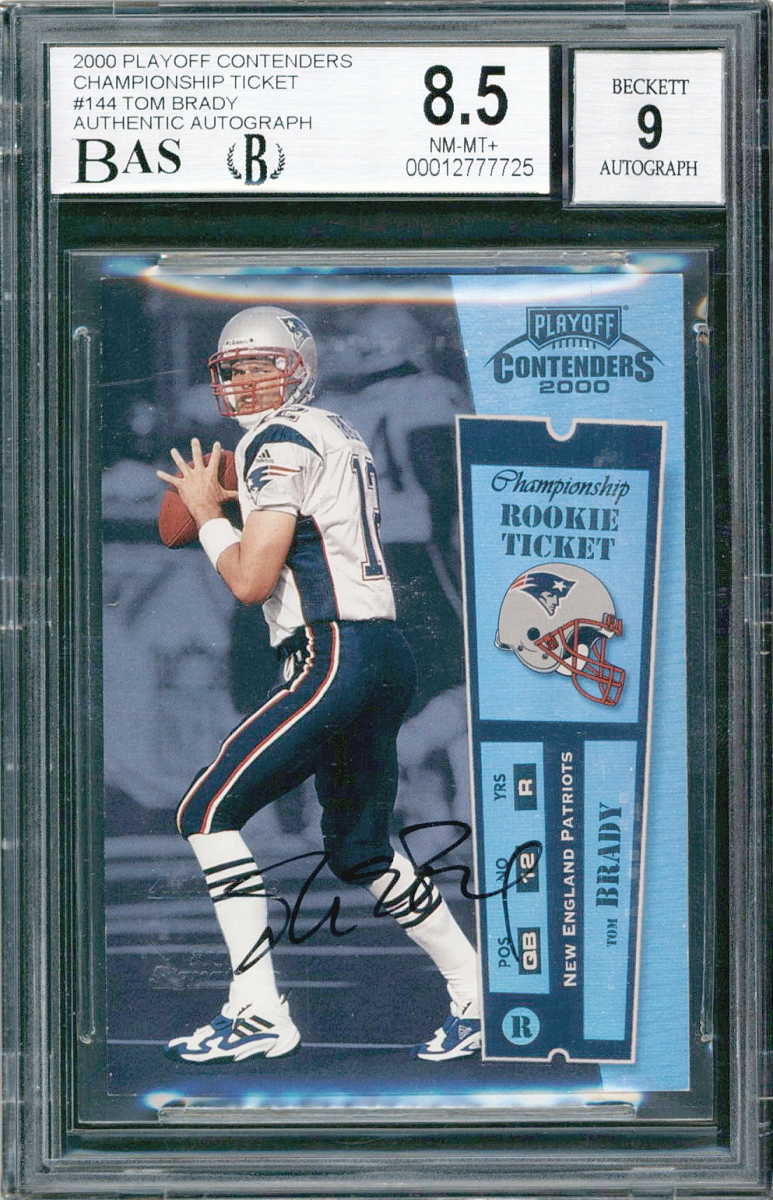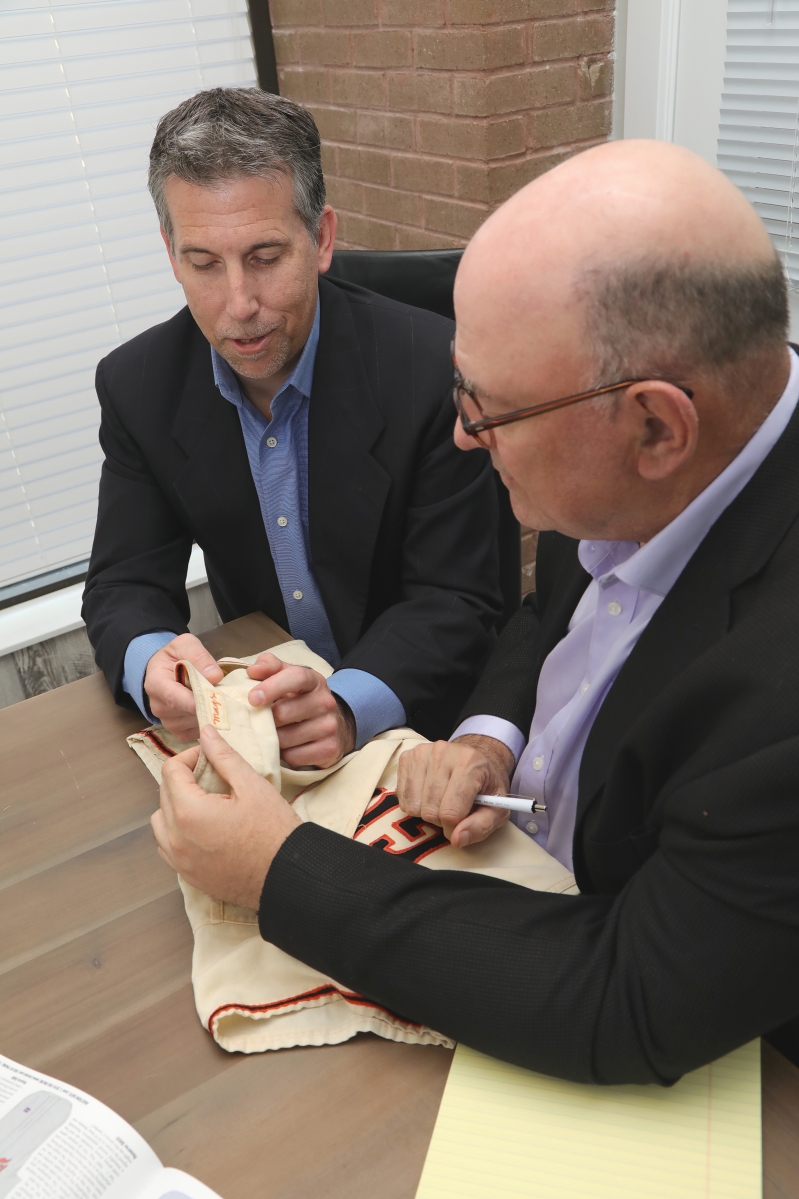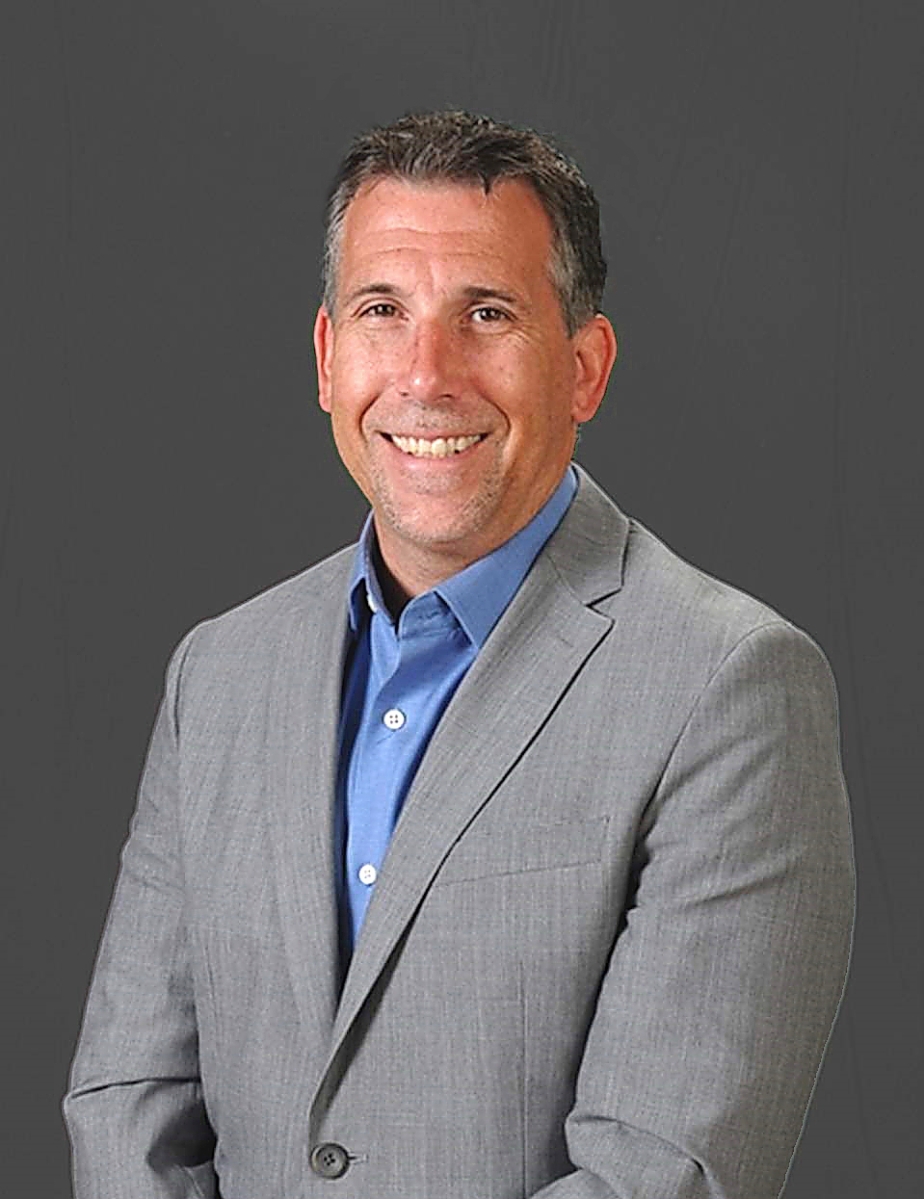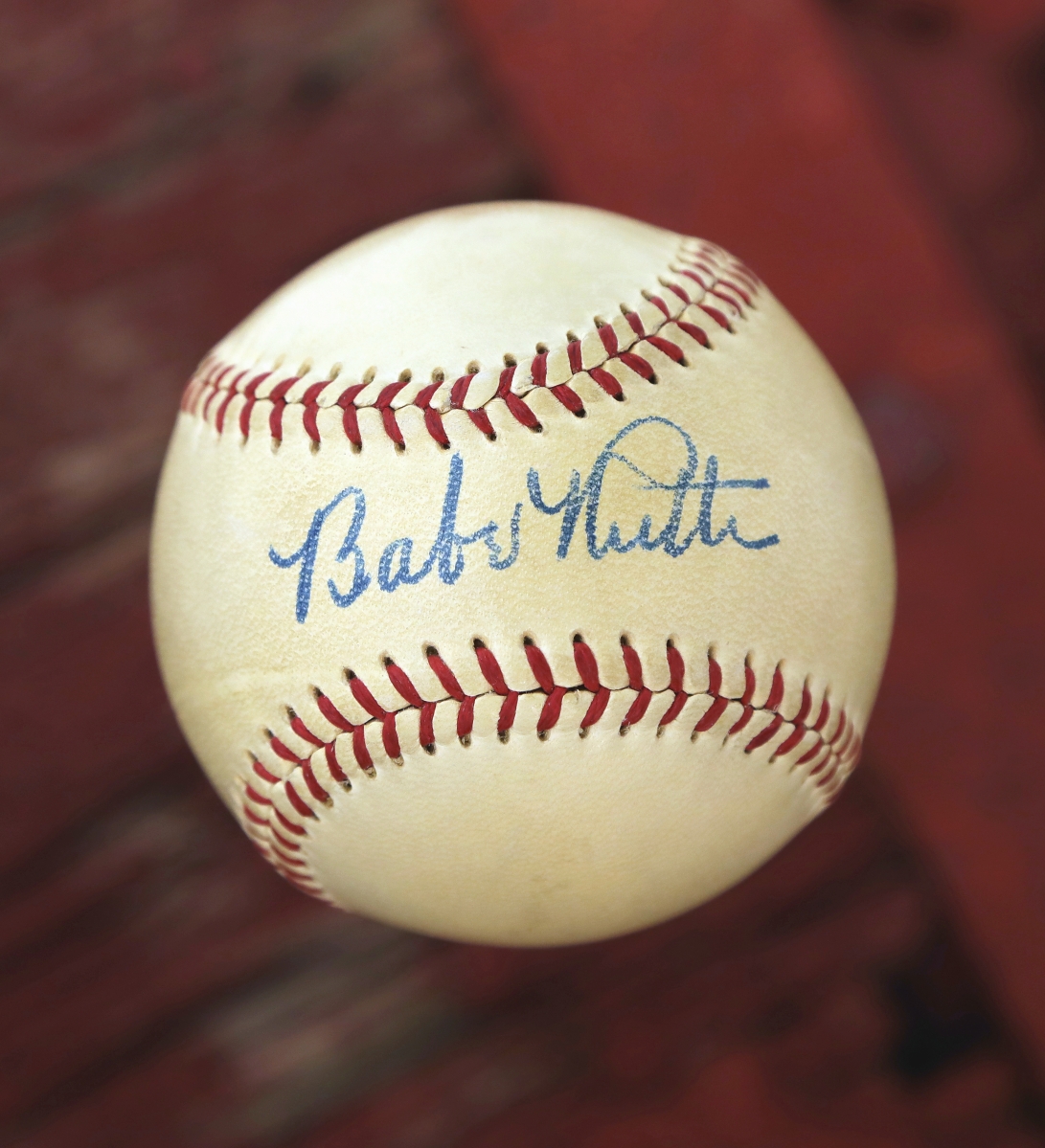When Josh Leland Evans passed away in 2020, the torch of the auction house that bore his name passed to his longest business partner, Michael Heffner, who started with Lelands right out of college more than 30 years ago. The sports memorabilia business has changed dramatically in that time as the dynamic duo took up a leading seat in the industry’s ride to dominance. We sat down with Heffner to talk about his come up with Josh, the auction house’s plan for the future and the current, explosive state of the market.
The sports memorabilia world lost a titan when Josh Evans passed away at 59 years old this past December. What was your favorite part about working with him?
His knowledge – it was second to none. He was a walking encyclopedia and knew where things were. Up until his last days, I was still asking him, ‘What’s this worth? What’s the history?’ And I’ll miss that a lot. Josh was very outgoing. Sometimes you never knew what he was going to say, it kept me on my toes. It inspired me, he had such a larger-than-life personality. When I first met him, I was still in high school, I was very introverted. I owe so much to him because he really showed me what was out there. I’m from a small town in Pennsylvania and I would have stayed in that town if I hadn’t met him. It was such a blessing.
What was his parting wish for Lelands?
We didn’t talk about that so much, he was quite ill for the last year. But he was concerned about his legacy. Other people, including myself, kept reassuring him. He didn’t even realize what he had contributed to this hobby and this industry, it took his untimely death for people to look back at what he accomplished. We always said that, no matter what happened to us, keeping Lelands alive and growing was paramount. Even though it wasn’t spoken, it was one of his wishes.
Did he instill any sort of overall working philosophy at Lelands?
The admiration for the material, you can’t really teach it, but he always spoke it. You have to have a love for the material and a love for the stuff in order to be successful. If you just look at it as business, you’re probably not going to be long and do well. If you love the stuff, you will. I’m a collector, he’s a collector, others in the office are collectors. It can be a distraction sometimes, you want to hold and appreciate an item sometimes, but that’s what it takes. That’s what he told me and he was 100 percent right. I’ve worked in this business for more than 30 years, every year with Josh, we were always together, and it’s amazing because I always loved the stuff. It has made my life a joy. When you love what you’re doing and the things you are working with, it’s not a job. I’ve been able to make a living off my hobby, which is pretty incredible when you think about it.

2000 Tom Brady Contender Card. Currently the most expensive football card ever sold at public auction.
What’s your best hunting story together?
I have so many. One of the best; it was very early on when I was still in college. He was based in Allentown and that’s how we met. I put myself through college buying and selling sports memorabilia. I discovered Josh in high school, I took some stuff to sell to him. He was working pretty much alone, he had an assistant secretary but he was it. He would sometimes call me and say he had a deal and see if I wanted to help him. In the early college days, this was 1988 or 1989, he called me and said he had a lead on a Mickey Mantle jersey. Now the jersey is worth millions, but at the time it was still worth $50,000, which was huge. Nothing besides a Honus Wagner card or a really high-end card or a Babe Ruth piece was selling for that kind of money. We went out to look at this jersey, it was passed down to a minor leaguer. It was incredible. We bought it for $25,000, which, again, was an unheard of price at the time. Most transactions were a couple hundred or thousand, but that was a lot. That was one of my first experiences where I thought ‘Wow this was real, that was real money,’ $25,000 was how much some people were making in a year. Ultimately it took a while to sell, but we sold it privately. That was a treasure hunt, seeing the people who had it. It was one of those experiences that really solidified my choice to pursue the hobby as a career.
So you started with Josh as a young man. Tell me about your experience there.
He was definitely my mentor. He taught me the things I know today. It was kind of neat after the first five years because I started to learn things Josh didn’t know, like bats and uniforms. He knew about them and originally knew much more, but there were certain things I grew more fond of, not only in my collecting but in the auctions and buying and selling. I would ask him all the time about publications, because I wasn’t thrilled about those things as much as the game-used items. He began to ask me about the bats, game-worn material and what not. We developed a banter, teasing each other that the other didn’t know something. We had an incredible relationship, he was a persona, the guy who was at the head of the table and the guy who always created the stir. He was brilliant at marketing. I was the guy who stayed in the background and kept things even.
Sometimes there’s a lot of highs in this industry and there’s a lot of lows. I kept things level. Josh was always at an extreme, he was always up. Sometimes I would remember arguing fondly about the values of things, he would always say you had to take chances: the methodology was the pattern of a shotgun. If you put the target up, you’ll hit it with a lot of bullets. But to this day, I’m a sharp shooter – when I fire, I want to hit the center. Sometimes we would make a wager if something was going to sell higher or lower than we bought it at. It was a healthy competition, and friendly, and one where we both respected each. We also learned off that, it made us more competitive with our actual competitors.
When did you become a partner?
In college, I received a degree in criminal justice and never worked a day in that field in my life. When I graduated, Josh offered me $40,000 to work full-time at Lelands, the closest starting salary in criminal justice was $25,000. I wanted to get my degree and complete my education, but I always knew that this was my calling. Sports memorabilia was my calling. After spending five to ten years with Josh, I had offers at other companies, but I always felt obligated and thought Josh and I had a great working relationship. I remained loyal and always was. Even though when someone approaches you at a show, they want to talk to you about working for them, those are things you can’t not listen to as a human being. But in my heart, I knew I would work at Lelands for less money than somewhere else. I didn’t come in and become an acquisitions associate right away, I did shipping and other tedious things, but maybe ten years in, around the early 2000s, Josh just gave me a piece of the business. Every year he gave me a percentage of the business, and then we worked out something where I was a 50-50 partner. That was in 2005, about 15 years ago. I know a lot of other people have worked for others in the industry their entire careers, I truly think we had one of the longest working relationships in the industry, over 30 years.
How has the sports memorabilia world changed in all that time?
There weren’t too many people back in the 1980s, I guess it started in the 1990s where people could make a living at this. There were people, but they were mostly people who went around and dealt at shows. There weren’t so many auction houses. Now everywhere you look, there’s a sports memorabilia auction house. Josh was running sports auctions before almost anyone else. So the business has really gone from something that was dealer-to-dealer and show-related to a business where a lot of sales are done through public auction. The most obvious thing is the value of the goods that we sell – we have a great Tom Brady rookie card up right now and it’s at $1.8 million. The values back in the 1990s – unless it was a Wagner card, getting seven figures for a card was unheard of. The value has increased so much, especially on the cards. Back in the 1980s and early 1990s, there were no grading companies. Everything was wrong, especially the major cards. It was more consensus of opinion than it was a grading company putting their stamp of approval.
Fortunately and unfortunately, a lot of the old time hobby people have passed on, that makes me sad, but the thing that makes me happy is that for the first time in many years, we’re seeing a renewed interest in modern cards, even if it’s because of the value they hold. We’re seeing 20-year-olds and people in their late teens looking at this as a career. That I haven’t seen, that was missing for a decade or two. Kids just weren’t interested much in cards. It all goes in peaks and valleys. I can’t think much of anything that has depreciated in value since the 1980s. We’re not talking about millionaires in this hobby anymore, because now we have billionaires. They have unlimited financial resources and that changes everything.
How has Lelands changed to keep up with it?
We’re looking for younger people who have an interest in the stuff to come and work with us. We have a full-time position open right now. One of the big changes was when we hired Jordan Gilroy. Josh and I have basically helped him learn the business, he’s one of those people who loves the stuff, he’s into the modern cards and he’s a huge asset to us. My plan for the future is planning for the youth in the hobby. These are the people who are going to be the next age, the next turning point. There’s so much stuff out there, people say some of it dried up, but there’s so much. We have a tough time keeping up with it sometimes.
Tell me about your sales schedule. You’re going to run sales more frequently?
We’re still producing a catalog as we’re having more frequent auctions. We’re going to try to have four to five major auctions per year because we’re having a glut of major material offered to us. People aren’t as patient as they used to be. We still buy things outright, so we’ll buy a collection. We just purchased a collection for more than a $1 million. For the people that don’t want to sell it outright, we conduct more auctions. People want gratification, holding things for six months isn’t an option for them.
What are some recent sale highlights?
Modern graded cards have been doing incredibly well. The limited editions, the Tom Bradys, the Michael Jordans. Even though those cards are selling for incredible numbers, sometimes millions, it’s also affected the vintage. Hank Aaron, Mickey Mantle, Willie Mays rookie cards – these have in the past year, in high grade, doubled in value. Sometimes tripled, depending on the population. That stuff is incredibly hot. I’m getting a lot of calls from newer, younger guys collecting cards who are now interested in the memorabilia, jerseys and game-used bats. I definitely see a surge in the prices there, when one aspect of the industry is hot, it affects the other aspects as well.
What does it look like for a young dealer/collector?
Social media is huge in the new age – collectors groups with buying and selling. It’s second to only major auctions, it’s a very valuable tool for young people. My son is 23 and he fully understand it. At 51, I’m a dinosaur. But these kids have a major advantage over what I had because they can sit there doing transactions all day long. They make livings at it, just like stock traders. If you have the knowledge, there’s a lot of money to be made. Even in a market that’s softer than the one we see today, the margin is the same, you just do more transactions. The internet, social media and collectors groups have influenced the hobby more than anything in the past five years.
Are people selling and buying back in? Taking their gains?
My personal experience, when prices went up, I sold some of my cards that I had in my collection. I couldn’t resist. And then they doubled and doubled again, so I kicked myself. I went back and bought some cards that I sold. Even though I sell from my collection, I usually take that money and buy something else for the collection. A lot of collectors are doing that. Some are holding, especially the guys that are worth a half billion, they’re in it to hold it.

Left, Mike Heffner, president, with the founder of Lelands.com, the late Josh Evans (right) examining a Willie Mays game-used jersey.
What’s hot right now?
This Brady card is stunning me. According to some people, it could be a $2 million card. It was produced in the last two decades. That area is so shocking it doesn’t even allow me to look at other areas.
What about in memorabilia?
A Willie Mays rookie card is $250,000, but you can still buy a nice flannel jersey that he wore for $200,000. I think people are seeing the game-worn jerseys and the bats and autographs as undervalued. They are picking up steam, there’s some real momentum.
Vintage cards?
They’re doing spectacular. Common players in high condition are kind of lagging, there’s more a demand for stars and rookies. The Ty Cobbs, Lou Gehrigs, Joe DiMaggios. The unopened material is intriguing, it’s card-related, but it’s like playing the lottery. All these people have lottery tickets in the closet and there’s less and less of it every day. I wasn’t fond of at first, but it’s creating interest in the industry. It’s good. It’s gambling, but it’s fun and they’re having a blast out of it.
What are your thoughts on the road ahead?
I’m curious to see how long this lasts. I try to not get too excited about it, but then again, I am excited about it. I am grateful that it’s occurring because it’s nothing but good. At some point it has to level out, but no one knows when that’s going to be. I am definitely excited for the next six months to see what happens and where it goes. No matter what, this has generated a lot of renewed interest in the field. Even if that goes down, some of that interest will linger, some of those collectors will stay.
Are there ever any indicators as to what might rise in the future?
I knew that the 1970s cards, the graded rookies and the like were taking off. I think the next thing is the 1980s cards. Even if there are a thousand 10s of a Roger Clemens rookie card, I think that stuff still has tremendous room for growth. It goes by decades. A Henderson rookie card in a 10 just sold for over $150,000 – that’s staggering. The Tony Gwynn rookies, I anticipate those to move up.
-Greg Smith






